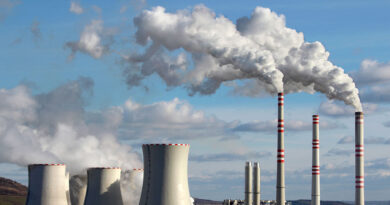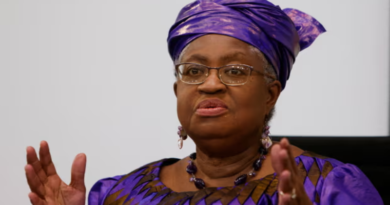U.S. Department of Energy Announces Clean Energy Achievements at COP28
WASHINGTON, D.C. – This week, U.S. Deputy Secretary of Energy David M. Turk traveled to Dubai, United Arab Emirates for the 28th Conference of the Parties to the U.N. Framework Convention on Climate Change (COP28), where he led the U.S. energy delegation. The Department of Energy announced a range of initiatives – on issues from clean hydrogen and nuclear energy to zero-emissions transportation and building decarbonization – to spur the transition to clean energy systems and help keep the 1.5-degree goal within reach. Highlights include:
Partnering to accelerate clean energy transitions
Taking the Energy Earthshots global. The U.S. Department of Energy (DOE) is spearheading the Biden-Harris Administration effort to develop innovative clean energy solutions, drive down the costs of technologies that are necessary for deep decarbonization, and support the development of clean energy markets globally, including through the Department’s Energy Earthshots. The Department is now taking this signature initiative global by collaborating with Canada on long duration energy storage and India on hydrogen.
Transforming energy in leading emerging economies. DOE and partner countries announced progress creating clean, secure energy systems through Net Zero World, the flagship initiative that leverages the expertise of ten National Laboratories to accelerate clean energy transitions. In only two years, Net Zero World has worked on implementation of more than 20 decarbonization actions, setting the stage for $10 billion in investments by 2025. Highlights include collaborating with Tocopilla, Chile, to repurpose over 400 MW of retired coal plants and assisting Ukraine in deploying distributed renewable energy and storage systems for critical infrastructure.
Driving economic development with clean energy in Africa. The United States and Mauritania signed a historic memorandum of understanding, which will facilitate cooperation on deployment of clean energy technologies in Mauritania that could simultaneously reduce emissions and catalyze economic development. The initial focus will be on creating the capacity for Mauritania to hold its iron ore — which is exported primarily to China for carbon-intensive steel production — and instead produce its own “green” steel with renewable energy, moving up the value chain from iron ore exporter to steel producer.
Advancing energy storage. The United States announced that it is joining Australia, Canada, and the European Commission in launching a new Clean Energy Ministerial (CEM) global initiative on supercharging grid-scale battery storage. This initiative will aim to boost stationary battery storage development and deployment and reduce technology cost to build a diversified, sustainable, responsible, secure, and transparent supply chain, promote grid stability and reliability, and support the integration of renewable energy globally
Accelerating nuclear energy capacity. As an initiative under the U.S.-UAE Partnership to Accelerate Clean Energy (PACE), the United States and United Arab Emirates announced the intention to launch the Regional Clean Energy Training Center (CETC) in the United Arab Emirates as a hub for regional civil nuclear cooperation. Meanwhile, to catalyze private-sector finance to build out safe, secure, and reliable global nuclear energy supply chains, the United States announced plans with Canada, Japan, France, and the United Kingdom to mobilize at least $4.2 billion in government-led investments that will enhance their collective enrichment and conversion capacity over the next three years.
Accelerating fusion energy. The United States announced an international partnership strategy and invitation for engagement to advance a common, bold vision for commercial fusion energy. Recent technical progress and market interest in fusion provide an opportunity to accelerate efforts in commercial fusion development, demonstration, and deployment. DOE serves as the lead technical agency in development and implementation of the strategy.
Enabling methane abatement. Cutting methane emissions is the world’s cheapest, fastest climate solution. The members of the Net Zero Producers Forum, including Canada, Norway, Qatar, Saudi Arabia, United Arab Emirates, and United States, announced the Upstream Methane Abatement Toolkit of best practices to reduce methane emissions associated with oil and gas production.
Advancing information on emissions across the natural gas supply chain. The United States is working with a group of natural gas exporting and importing countries to advance comparable and reliable information about greenhouse gas emissions across the natural gas supply chain to drive global emissions reductions. The working group has announced plans to develop a framework for the measurement, monitoring, reporting, and verification (MMRV) of methane, carbon dioxide, and other greenhouse gas emissions that occur during the production, processing, transmission, liquefaction, transport, and distribution of natural gas.
Decarbonizing the rail sector. The United States and Canada announced a Rail Decarbonization Task Force to develop and implement a joint vision for rail decarbonization. Together, they intend to establish a joint research agenda to test the safe integration of emerging technologies, including hydrogen-powered and battery-electric locomotives, and coordinate on strategies to accelerate the transition from diesel-powered locomotives to zero emissions technologies to ensure a net-zero rail sector no later than 2050, among other activities.
Spurring multilateral commitments to keep 1.5 within reach
Expanding nuclear energy. The United States and more than 20 countries launched the Declaration to Triple Nuclear Energy. The Declaration recognizes the key role of nuclear energy in achieving global net-zero greenhouse gas emissions by 2050 and keeping the 1.5-degree goal within reach. Core elements of the declaration include working together to advance a goal of tripling nuclear energy capacity globally by 2050 and inviting shareholders of international financial institutions to encourage the inclusion of nuclear energy in energy lending policies.
Scaling global renewables and energy efficiency. The United States, European Union, and United Arab Emirates co-led a coalition of countries committed to pursuing a global tripling of renewable energy and a doubling of energy efficiency by 2030, in line with efforts to ensure a 1.5°C-aligned power sector, including ending new unabated coal capacity globally.
Facilitating clean hydrogen markets. The United States and more than 30 countries launched the Declaration of Intent on the Mutual Recognition of Certification Schemes for Renewable and Low-Carbon Hydrogen and Hydrogen Derivatives. Recognizing the role of clean hydrogen in global decarbonization and meeting global energy needs, endorsers of the declaration seek to work toward mutual recognition of hydrogen certification schemes to help facilitate a global market.
Accelerating carbon management. The Carbon Management Challenge recognizes the urgency of deploying, at scale, carbon capture, utilization, and storage and carbon dioxide removal as key elements of keeping the 1.5-degree goal within reach, complemented by the utmost efforts to expand renewable and nuclear energy and accelerate the substitution for fossil fuels. Members of the Challenge, co-sponsored by Brazil, Canada, Indonesia, the United Kingdom, and the United States, advance a global goal of expanding carbon management projects to reach gigaton scale annually by 2030. At COP28, the Challenge announced new participants, including Iceland, Indonesia, Kenya, Mozambique, Netherlands, Romania, and Senegal.
Investing and innovating to reach net zero at home
Showing progress toward U.S. climate goals. Recent analysis conducted by DOE and the Environmental Protection Agency shows that the Inflation Reduction Act (IRA) and Bipartisan Infrastructure Law (BIL) can help drive down U.S. net greenhouse gas emissions by as much as 41% below 2005 levels by 2030. DOE joined and supported a presentation of the U.S. voluntary supplement to the Fifth Biennial Report to the U.N. Framework Convention on Climate Change showing an expected near doubling in emissions reductions compared to what was expected before President Biden signed the IRA and BIL.
Decarbonizing the building sector. DOE announced the upcoming publication of the U.S. National Buildings Strategy, a blueprint to decarbonize buildings by 2050 while prioritizing equity, affordability, and resilience benefits to communities. The 2050 vision sets targets to reduce onsite energy use intensity by 50% and reduce onsite emissions by 75%, among other goals. The Department also launched the Affordable Home Energy Earthshot to accelerate breakthroughs in research and development and reduce costs in residential buildings and ensure benefits of the clean energy economy reach all U.S. communities. Through the Energy Earthshot, the Department aims to reduce the cost of energy-efficient retrofits in affordable homes by at least 50% and decrease residents’ energy costs by at least 20% within a decade. DOE and the Department of Housing and Urban Development also announced a memorandum of understanding to work together on domestic efforts to reduce carbon emissions in the building sector and to cut costs for consumers through energy efficiency improvements. It is also notable that DOE recently announced a total of $22 million in cash prizes and extensive technical assistance for Phase 1 of the Buildings Upgrade Prize.
Advancing clean hydrogen. DOE has set aside up to $1 billion for a demand-side initiative to ensure reliable, bankable demand and demand-certainty for clean hydrogen projects at its Regional Clean Hydrogen Hubs to accelerate clean hydrogen buildout and catalyze the formation of a broader clean hydrogen commodity market. The Department also released Hydrogen Shot Technology Assessment: Thermal Conversion Approaches as part of a series of technology assessments aimed at supporting the goal of reducing the cost of clean hydrogen to $1/kg by 2031.
Improving energy resilience. DOE recently announced the selection of solar companies and nonprofits to install rooftop solar and battery storage systems for vulnerable households in Puerto Rico through the $1 billion Puerto Rico Energy Resilience Fund. The first round of funding, up to $440 million, will help lower energy bills for 30,000–40,000 single-family households in Puerto Rico, improve household energy resilience, and keep the lights on during extreme weather events.
Decarbonizing the maritime sector. The Departments of Energy, Transportation, Housing and Urban Development and the Environmental Protection Agency will publish a Maritime Decarbonization Action Plan in 2024 to outline multiple decarbonization pathways in fuels, energies, and technologies across vessel types and operational profiles. At COP28, they released a Preview of the Action Plan, which will address commercial maritime activity as well as recreational boats and transit ferry systems.
Source: cleantechnica.com




